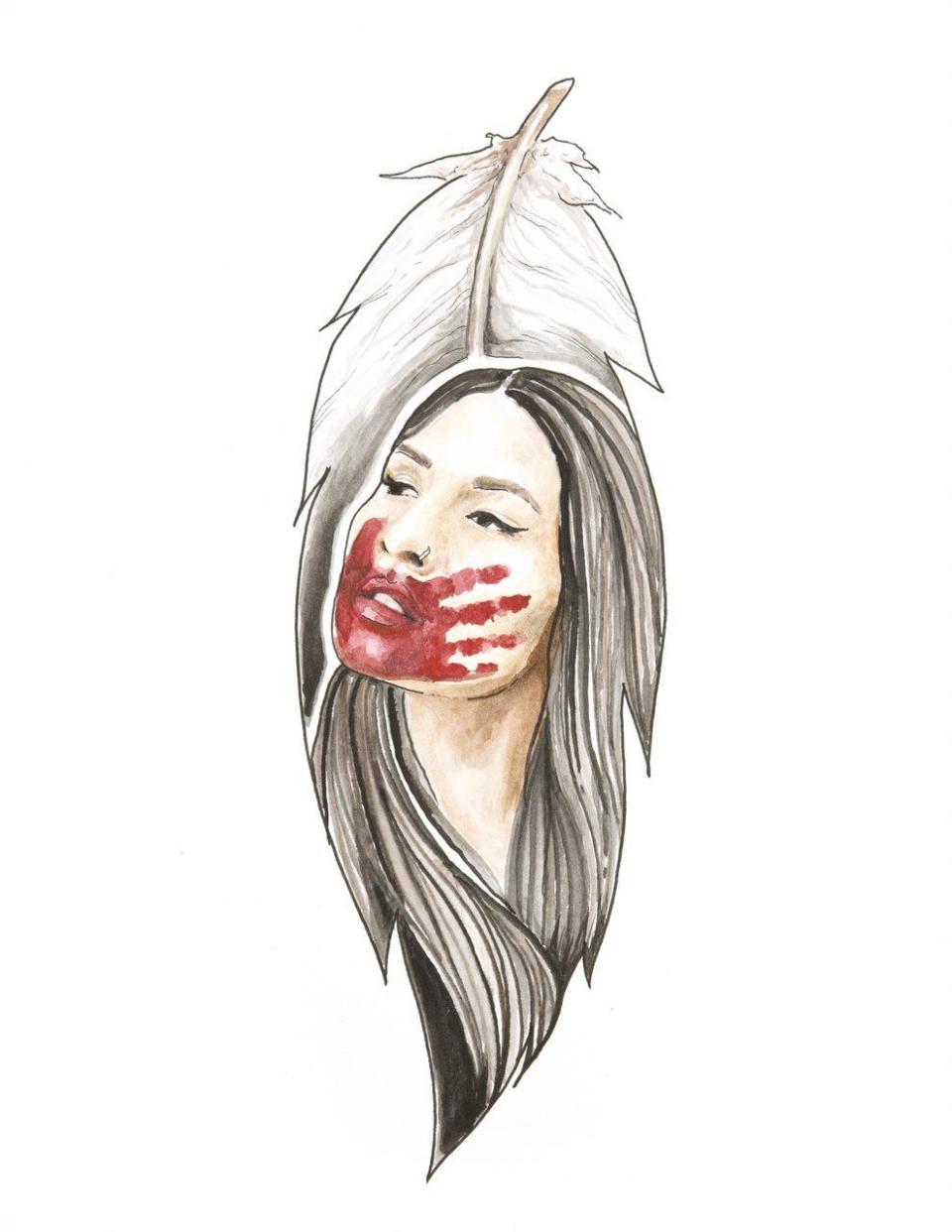Artist honors missing and murdered Indigenous victims
Indigenous artist Tristen Jenni has created at least 207 portraits memorializing missing and murdered Native people over the last two years.
Indigenous people across the U.S. and Canada are disproportionately murdered or go missing, known by advocates as the Murdered and Missing Indigenous Peoples crisis, or MMIP.
Jenni, who is Plains and Woodland Cree from the Chakastaypasin band in Saskatchewan, Canada, wanted to honor her cousin, Michelle Sanderson, who died in 2009. For years, Jenni could not shake her frustration with how her cousin's death was investigated and she poured her concerns into her paintbrush, creating the project's first image in 2020.
"I want[ed] to do a piece that [would] get people talking or it'd be such a striking image that people will have to look," she told CBS News.
The piece, titled "Not Invisible," is not a literal depiction of Jenni's cousin. The artist said she wanted the work to universally represent Indigenous women.

After sharing the piece on Facebook, Jenni said, the work went viral. The piece features a woman's face set inside an eagle feather. The woman is looking upward with a red handprint over her mouth, a symbol advocates use for the crisis.
"[The feather] carries our prayers up," she said, while she wanted the woman's face to look courageous and strong.
The color red is significant because many tribes believe it's the only color the spirit can see, Jenni said.
"We put it on our warriors after they come back from war, that they fought courageously and with honor," she said. "I wanted it to be like: You're no longer invisible."
Homicide is the third leading cause of death for Native American and Alaskan Native men under the age of 44 and the sixth leading cause of death for women in the same demographic, according to The Centers for Disease Control and Prevention. In comparison, homicide is the fifth leading cause of death for Black men, 10th leading cause for Hispanic men and outside the top 10 causes of death for White and Asian men in the U.S.
More than 84% of American Indian and Alaska Native women and more than 81% of men have experienced violence, according to a 2016 study by the National Institute of Justice.
Even though the original piece was inspired by her cousin, Jenni said she wanted the work to represent anyone that's been affected by the crisis. Because, she said, the trauma of losing her cousin "sits" with her every day. This project was a way for her to cope and galvanize others in their grief.
The family of Christy Woodenthigh, a 33-year-old mother of three who died in March 2020 on the Northern Cheyenne reservation in southeast Montana, requested Jenni create a portrait of their sister.CBS News' "Missing Justice" podcast focuses on Christy's life, the investigation by federal authorities into her death, and how law enforcement operates on the Northern Cheyenne reservation. According to federal data, the Northern Cheyenne tribe has the third-highest total of missing persons of any tribe in the United States. At least 17 tribal members were reported missing as of August 2021.
On her website, Jenni sells copies of her most well-known pieces and uses the proceeds to offer free services to families of missing and murdered Indigenous victims.
"I felt like it was something so important, something that I could do because, as one little person, I feel like I can't do very much. But this is my gift," Jenni said of the portraits. "This is what the Creator has gifted me: being able to share this and being able to capture their loved ones in these photos for them, and showing them with this strength instead of being filled with sadness."
IAEA director general on Putin's intentions with Ukrainian nuclear plant | 60 Minutes
Worker at Zaporizhzhia nuclear plant calls Russian forces "reckless"

